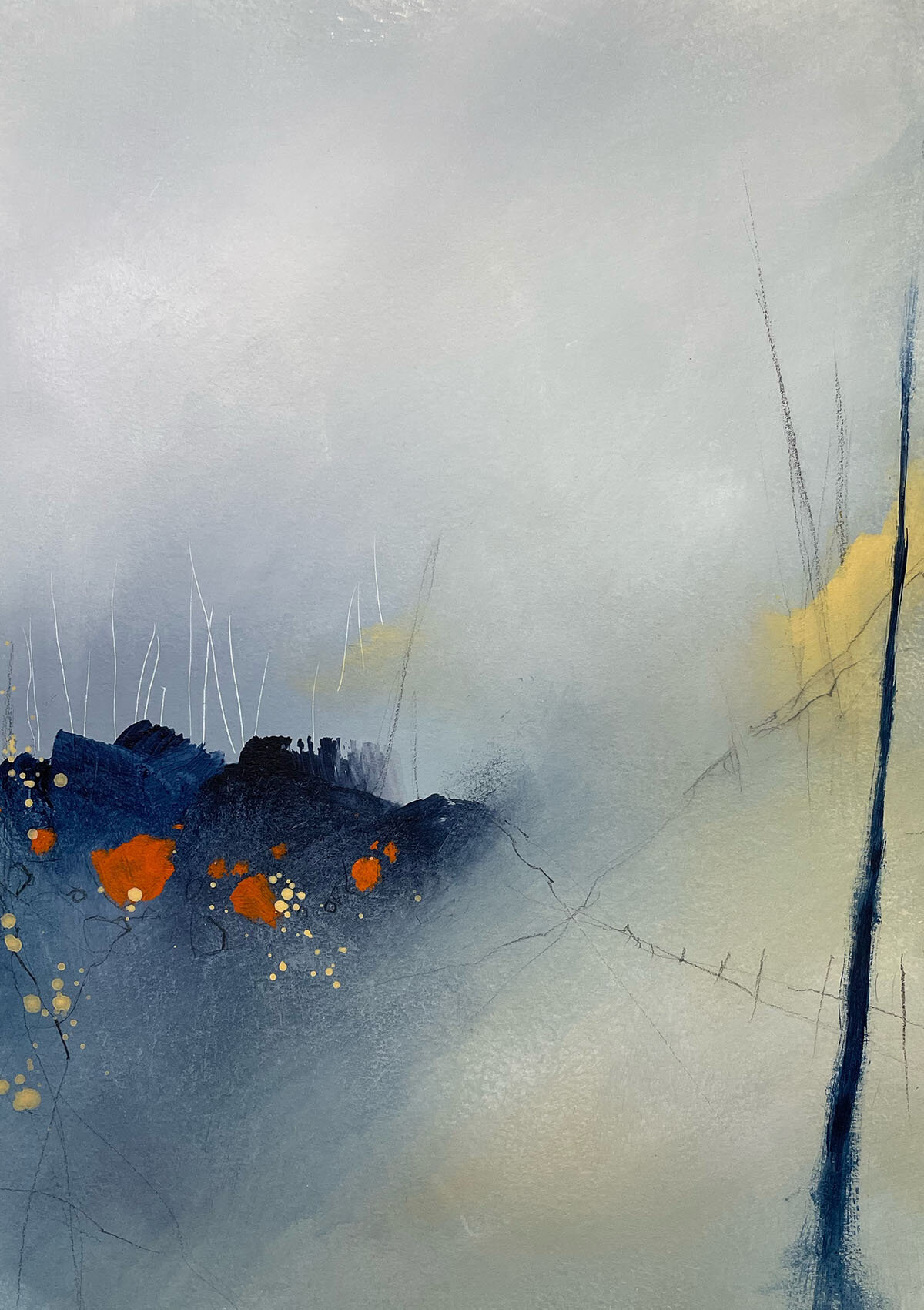
On The Disappearance Of Gravity And Its Effect On Pseudotsuga Menziesii In Pacific Northwest Forest Terrain
Vainio, C., Issaquah WA, September 2021.
This study assesses the phenomena of localized gravitational loss within the forest terrain of the Pacific Northwest. We find that in the presence of fog and mist there is a localized anti-gravitational field primarily affecting trees of the species Pseudotsuga Menziesii, causing the temporary elimination of the horizon and the trees to lift off from the ground. We investigate the correlation between this anti-gravitational field and the mist that accompanies it, and find that the relationship is a non-linear progression.
Furthermore, we note that in the presence of this anti-gravitational field, sound is often dampened and human subjects report feelings of calmness and quiet.
FIGURE 1: There Is No Time, Only Space
Acrylic and pencil on 11” x 15” watercolor paper
$180 USD
Available
The effect of the loss of the normal gravitational field is seen across the terrain, but has its strongest effects on the species Pseudotsuga Menziesii, or the Douglas Fir, common to the Pacific Northwest.
FIGURE 2: A Visible Heartbeat
Acrylic and pencil on 11” x 15” watercolor paper
$180 USD
Available
As shown in figures 3 and 4, the presence of the inverse gravitational effect does not appear to be strongly correlated with a single season — the field strength and directionality differs (see figures 5 and 6) but the presence of the effect itself remains the same regardless of season.
FIGURE 4: Eyes Wide But Hidden
Acrylic and pencil, 36” x 36” x 1.5” canvas
$1,000 USD
Available
FIGURE 5: The Shadows Have Taken Flight
Acrylic, oil stick, and pencil on 11” x 15” watercolor paper
$180 USD
Available
Our research shows that a set of variables associated with the gravitational field appear to have directionality, with the current season being the strongest indicator of the vector.
As temperatures cool, the field exerts a downward influence on the associated mist, which research shows acts as a non-linear mesh across the terrain. The downward force of the mist is directly proportional to the normal gravitational field along an opposing vector. When the mesh’s downward force exceeds the normal gravitational field’s opposite force, this causes Pseudotsuga Menziesii to lift off from the surrounding terrain.
FIGURE 6: The Breath Of The Land Sustains Them
Acrylic and pencil on 11” x 15” watercolor paper
$180 USD
Available
As shown in figures 7 and 8, however, the gravitational field appears to invert in warmer temperatures. This effect forces Pseudotsuga Menziesii to untether from the terrain. It is unclear from this research why the field inversion correlates to temperature, and we plan to research this further.
FIGURE 9: Beyond The Comfortable Land
Acrylic and pencil on 11” x 15” watercolor paper
$180 USD
Available
In addition to its effects on the local species of tree, the inverse gravitational field appears to have a similar effect on portions of the terrain, most notably banks and slopes along the local mountain ridges.
FIGURE 10: Portals
Acrylic and pencil on 20” x 20” x 1.5” canvas
$450 USD
Available
In summary, we believe that the inverse gravitational field exhibited in Pacific Northwest forest terrain is elusive and irregular but is correlated with temperature changes in the local microclimates. We believe it is worthy of further study for its effect not only on Pseudotsuga Menziesii but for the possible unknown effect on other flora and fauna in the region.













